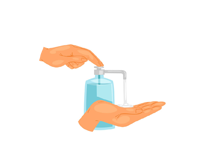N-acetylcarnosine
Uses of N-acetylcarnosine
- Management of age-related cataracts
- Protection against oxidative damage in the eyes
- Supportive treatment for eye strain and dryness
How N-acetylcarnosine works
N-acetylcarnosine acts as an antioxidant that neutralizes free radicals in the eye, helping to protect the lens and surrounding tissues from oxidative stress and delay cataract formation.
Benefits of N-acetylcarnosine
- Delays progression of cataracts
- Protects eye tissues from oxidative damage
- Improves clarity and comfort in vision
- Non-invasive alternative to surgery in early stages
How to take N-acetylcarnosine
N-acetylcarnosine is typically used as an eye drop. The usual dosage is one to two drops in each eye twice daily, or as directed by a healthcare provider.
Type of Dosage Available
- Eye drops
Side effects of N-acetylcarnosine
- Mild eye irritation
- Temporary blurred vision
- Eye redness or stinging
- Allergic reaction (rare)
Safety advice
- Use under the guidance of an eye specialist
- Do not use if the solution changes color or becomes cloudy
- Remove contact lenses before applying the drops
- Avoid touching the dropper tip to prevent contamination
- Keep out of reach of children
Frequently Asked Questions (FAQs)
Q. What is N-acetylcarnosine used for?
A. N-acetylcarnosine is primarily used in eye drops to manage age-related cataracts and protect against oxidative eye damage.
Q. How does N-acetylcarnosine help with cataracts?
A. It acts as an antioxidant, reducing oxidative stress and slowing the clouding of the eye lens associated with cataracts.
Q. How often should I use N-acetylcarnosine eye drops?
A. Typically, one to two drops in each eye twice daily is recommended, but follow your doctor `s instructions.
Q. Are there any side effects of N-acetylcarnosine?
A. Side effects are rare but may include mild irritation, redness, or temporary blurred vision.
Q. Can I use N-acetylcarnosine with other eye medications?
A. Yes, but you should wait at least 5-10 minutes between applying different eye drops. Always consult your doctor first.
Medicine Not Available for N-acetylcarnosine
Uses of N-acetylcarnosine
- Management of age-related cataracts
- Protection against oxidative damage in the eyes
- Supportive treatment for eye strain and dryness
How N-acetylcarnosine works
N-acetylcarnosine acts as an antioxidant that neutralizes free radicals in the eye, helping to protect the lens and surrounding tissues from oxidative stress and delay cataract formation.
Benefits of N-acetylcarnosine
- Delays progression of cataracts
- Protects eye tissues from oxidative damage
- Improves clarity and comfort in vision
- Non-invasive alternative to surgery in early stages
How to take N-acetylcarnosine
N-acetylcarnosine is typically used as an eye drop. The usual dosage is one to two drops in each eye twice daily, or as directed by a healthcare provider.
Type of Dosage Available
- Eye drops
Side effects of N-acetylcarnosine
- Mild eye irritation
- Temporary blurred vision
- Eye redness or stinging
- Allergic reaction (rare)
Safety advice
- Use under the guidance of an eye specialist
- Do not use if the solution changes color or becomes cloudy
- Remove contact lenses before applying the drops
- Avoid touching the dropper tip to prevent contamination
- Keep out of reach of children
Frequently Asked Questions (FAQs)
Q. What is N-acetylcarnosine used for?
A. N-acetylcarnosine is primarily used in eye drops to manage age-related cataracts and protect against oxidative eye damage.
Q. How does N-acetylcarnosine help with cataracts?
A. It acts as an antioxidant, reducing oxidative stress and slowing the clouding of the eye lens associated with cataracts.
Q. How often should I use N-acetylcarnosine eye drops?
A. Typically, one to two drops in each eye twice daily is recommended, but follow your doctor `s instructions.
Q. Are there any side effects of N-acetylcarnosine?
A. Side effects are rare but may include mild irritation, redness, or temporary blurred vision.
Q. Can I use N-acetylcarnosine with other eye medications?
A. Yes, but you should wait at least 5-10 minutes between applying different eye drops. Always consult your doctor first.
Related Salt
Download India's most affordable pharmacy app
- Compare with medicine prices
- Save upto 90% on your medicine bills

Temperature Controlled storage and delivery

Regular Sanitization

Disinfected Packaging









 Added!
Added!